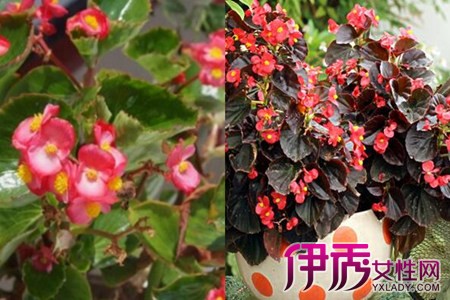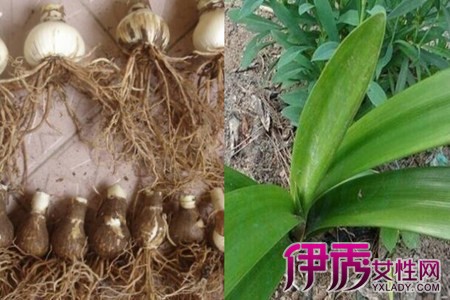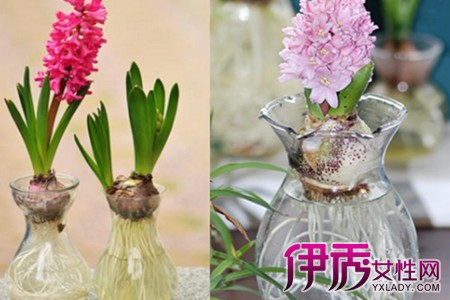What about the scorched edges of the four Seasons Begonia leaves? skillfully teach you to cultivate flowers and plants.

There are many varieties of begonia in the four seasons, but the most common problem encountered in breeding is the scorched edge of the leaves. In fact, this is caused by the failure to control the growth environment and favorite soil quality of the four seasons begonia. Many people choose very small flowerpots when breeding and feel that they save the place. But the root of this kind of flower is very long and small flowerpot can not supply nutrients, so it is better to choose a bigger one.
And the four seasons crabapple likes the soft soil, there are many nutrients in the black soil, so you can choose. Do not use very hard loess, the root of the nutrition supply is not on the coke edge of the situation is very normal. Another situation is that the soil is too hard to take root and affect the normal growth, and there will be problems with the leaves.
Be careful when watering. Many people like to wash rice or wash vegetables to water flowers. I think it can save water, but it's not true at all. When the four seasons crabapple is watered with Amoy rice, the leaves will turn yellow or grow into small black spots. So use tap water when watering.
In winter, the temperature is very low in many places, even below zero. At such times, it is necessary to put the four seasons crabapple in indoor breeding, not outside. If you leave it outside, you may freeze to death, and the leaves will be a little crimped at the beginning of the cold.
When the flowers are in bloom, we should pay attention to observe that if there are bugs, we should kill them in time. If the bug is not killed in time, there will be problems with the leaves. Do not spray water within two days after spraying insecticide. If you master these farming skills, there will be no coke edge situation, and it will grow more luxuriantly.
What if the leaves of four Seasons Begonia curl and turn yellow?
Too much teaching of crabapple in four seasons leads to yellowing of leaves.
The four Seasons Sea likes a wetter climate, so places with high humidity are suitable for its growth, but avoid stagnant water in the soil, overwatering in the ancient country, or being attacked by storms, which will cause the roots of the plants to rot and the leaves to turn yellow.
In order to prevent this imagination, you should pay attention to water control when watering, and transfer the potted plants to a cool and ventilated place, waiting for the leaves to turn green again before normal maintenance, or in serious cases, pruning can be taken to make the base sprout again. Too dry basin soil in summer will cause wilting of plants and withered leaves.
The leaves of four seasons begonia are yellowed due to lack of light.
The four seasons crabapple likes the semi-overcast and semi-humid environment. If it receives strong light in the midsummer season, it will scorch and curl the leaves. Transplant the plant to a ventilated and cool place for proper shade, if it is not quite high, it can be restored to normal.
However, if the plant grows in the place where the light is insufficient, the growth of the plant will decline, the number of flowers will be less, and the color of the flower will be light. Therefore, in addition to the need for shade in hot and hot summer, the spring and autumn season should be placed in a place with sufficient scattered light, and the winter temperature is relatively low, which can be placed on the balcony to direct sunlight to ensure photosynthesis.
Improper fertilization of crabapple in four seasons leads to yellowing of leaves
In the process of growth, if there is too little fertilizer and no base fertilizer, the plant will grow short, lack of nutrients, and the leaves will be light or yellowing. If the fruit fertilizes too much and continues to apply more fertilizer in summer, it will lead to disease and yellowing of rotten roots and leaves.
How to deal with the yellowing of the leaves of begonia in four seasons? there are 5 reasons to deal with it.
What if the leaves of the four seasons begonia turn yellow? 1. Overwatered
If the young leaves on the top of the four seasons crabapple flowers are yellowish, and the old leaves are gradually yellowing and the new shoots are shrinking, it is generally due to too much watering or long-term rain, resulting in too wet flowerpots, thus making the soil anoxic and causing the roots of the four seasons crabapple to rot.
What to do
Often loosen the soil for the four seasons crabapple, and to maintain a good drainage of pots, try to make sure that there is no stagnant water in the pot soil, so flower friends usually pay attention to control the amount of water, and to avoid rain.
2. Lack of light
Four seasons crabapple long-term indoor maintenance, it is easy to lack of sunlight, long-term no sun exposure, four seasons crabapple will also appear yellow leaf phenomenon.
What to do
Generally speaking, the potted crabapple plants of the four seasons are moved to the place where the sun shines, but the place to be moved should avoid the strong light.
3. Long-term water shortage
If the leaf color on the top of the four seasons crabapple is normal, but the lower leaves gradually dry yellow and fall off upward. Generally speaking, the soil in the lake basin is too full or watered for a long time, resulting in the aging of the branches of the lower leaves.
What to do
When watering, flower friends should control the amount of water, as long as keep the four seasons crabapple pot soil moist, and you can sprinkle some water on the leaves.
4. The soil is not suitable
Four Seasons Begonia is a flower plant that likes acidic soil. When florists find that its leaves gradually turn yellow, it may also be caused by the alkalinity of the soil.
What to do
Can use grass soaking water to irrigate the four seasons crabapple, if it is the northern alkaline water, to add a little ferrous sulfate, so that the leaves will turn green.
5. Lack of fertilizer or harm of fertilizer
A, the leaves of flowers are thin and yellow, which is due to the fact that the big pots of flowers are small or have not been changed for a long time, soil change and lack of fertilizer, so water and fertilizer should be gradually increased and pots should be changed at the right time.
B, the flower leaf appears concave and convex not to stretch, the new leaf is thick, the old leaf is gradually yellow, should be watered frequently, suspend fertilization, the vegetable seeds can be sprinkled in the basin, and pulled out after emergence, in order to consume the fertilizer in the basin and restore the normal growth of flowers and trees.
- Prev

The planting method of Zhu Dinghong bulb can blossom more vigorously only if it is cultured correctly.
Zhu Dinghong blossoms beautifully and beautifully, and many people especially like to raise it at home. However, many friends do not know how to plant Zhu Dinghong's roots after they have bought them. Today we will tell you how to plant Zhu Dinghong's bulbs.
- Next

Learn the hydroponic culture method of hyacinth and cultivate clean, beautiful, space-saving flowers. It's that simple.
Hyacinth blossoms are particularly beautiful, but there is little space in some families. If you want to raise a few more pots of hyacinth, you will feel that the space is very crowded. These friends would like to know how to cultivate hyacinth in water, because this will save more room space.
Related
- Fuxing push coffee new agricultural production and marketing class: lack of small-scale processing plants
- Jujube rice field leisure farm deep ploughing Yilan for five years to create a space for organic food and play
- Nongyu Farm-A trial of organic papaya for brave women with advanced technology
- Four points for attention in the prevention and control of diseases and insect pests of edible fungi
- How to add nutrient solution to Edible Fungi
- Is there any good way to control edible fungus mites?
- Open Inoculation Technology of Edible Fungi
- Is there any clever way to use fertilizer for edible fungus in winter?
- What agents are used to kill the pathogens of edible fungi in the mushroom shed?
- Rapid drying of Edible Fungi

